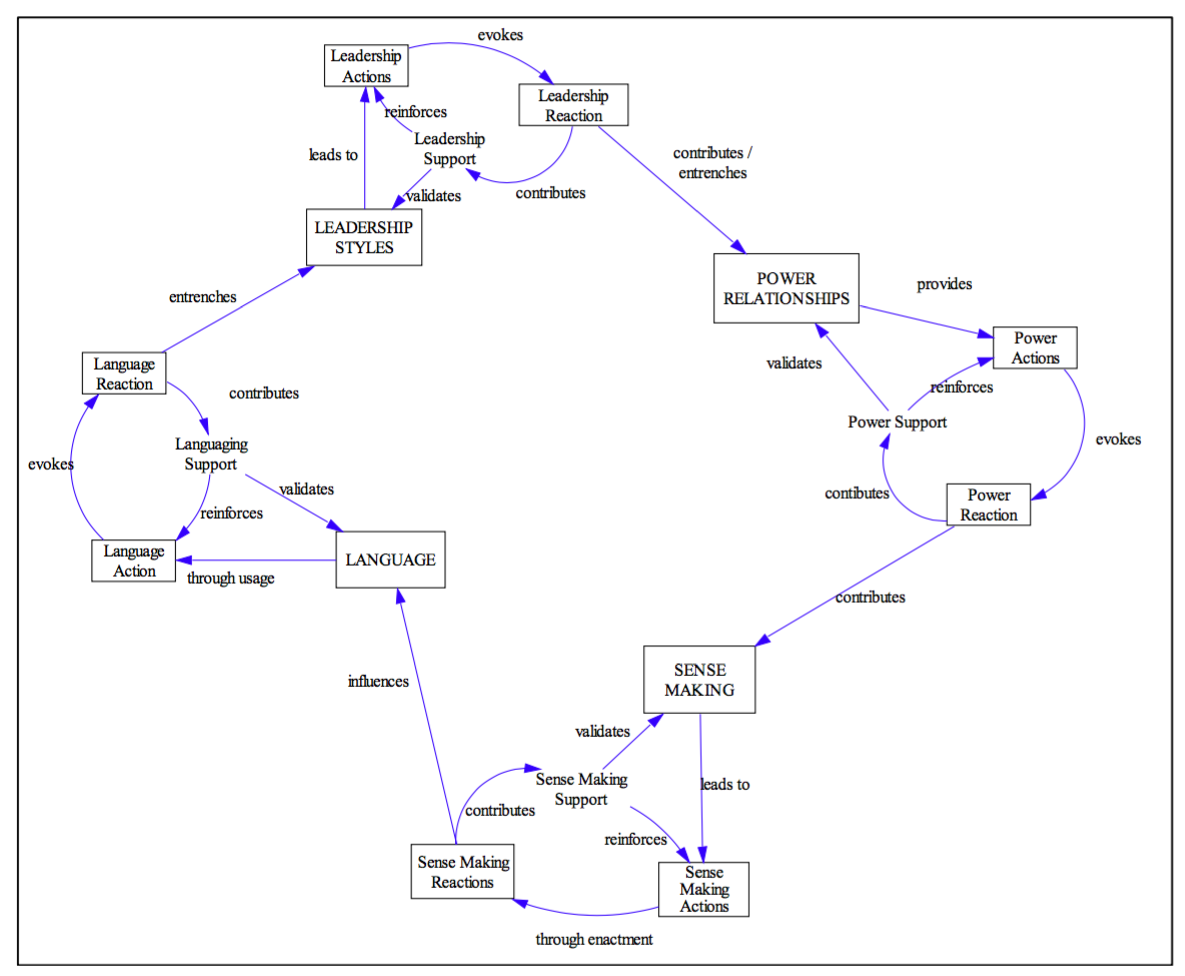So far we have four different systems or modes that seem to be in operation in businesses. These systems are secondary systems that appear to never be referred to, discussed or designed. The primary systems such as operations or finance are all controlled and influenced by these secondary systems. These secondary systems are Leadership Styles, Power Relationships, Language / Representation and Sense-Making.
It stands to reason that none of these systems are active in isolation and in order to be able to make a worthwhile intervention in a company where such systems are present, it would be beneficial to understand how they interact with each other.
When we start at LEADERSHIP STYLE we see how this affects the use of POWER RELATIONSHIPS when the management team uses their power to influence situations and outcomes and even processes to ensure that they (the management team) are needed. As shown in an earlier article, the POWER RELATIONSHIPS have a direct influence on the way that people make sense of their organisational world. The SENSE MAKING process is being “told” to the organisation by their leader. This ‘telling’ happens through LANGUAGE and gestures. Stuart Hall (1992) says the language that we use to produce meaning to ourselves only produces meanings in positioning us within the rules of the language and the systems of meaning within our culture. Language, he claims, is a social not individual system. If this is true, then the ‘telling’ is happening by more than just the leader. We see that the top management team ‘telling’ the rest of the organisation what to do makes the organisation respond through language and representation that reinforces the use of the language which in turn reinforces the meaning of the organisation.
We can therefore represent these relationships and their interactions in the following manner:

When we now apply this lens to a business’ current situation, we can get a better understanding of why the initial attempts at implementing learning mechanisms and the attempts of the other ‘change’ initiatives seemed to fail.
In the case of developing different modes of representation of language, our case studies found that none of the people involved in the entrenched leadership style saw the benefits of new language. On the contrary, the new language was a threat to the leadership style and it meant that power would pass to the “speakers” of the new language, so it was promptly rejected. We concluded that the constant request for metrics and reports in the ‘old more familiar’ way was an indicator that our language was being rejected. The request for known representation was in fact not a sense making process but also a power exercising process. By complying with the request, the consultants and the rest of the teams, were reinforcing the power, leadership style and language game.
In one case study, the HR director’s process of introducing a new clock-card system worked because he tied the success of the new system to that of existing language and power. The management team could respond to a threat against production because they were after all the people who could fix it. This action reinforced the HR director’s sense-making model and he has used this tactic successfully since. This just further entrenches the current modus operandi.
If we use this lens as a tool to try and change things within business we are faced with some interesting challenges. The first is where do we begin? The system described so far seems to be a self-regulating system and any attempts made by the anyone to change things seem to fail at the top management level.
A different approach would be to start influencing or subtly changing the non-dominant systems within the model. Weick (1995) suggests that subtle changes or subtle “shocks” which are barely perceptible be used to trigger change. The overriding qualification for this to work would be the fact that people within the organisation would need to be dissatisfied with their current situation (Weick, 1995). Often we see the different levels of management being unhappy or dissatisfied with their management above because they are too rigid. Strangely though, the same management teams are unhappy with their subordinates because they do not want to comply with their requests. The environment seems right for subtle changes.
In using the secondary process model, we could start an intervention in the sense-making or languaging systems. The effects will slowly work through the system and should affect the leadership-styles and power relationships. An intervention in the sense-making system could be as simple as feedback meetings where management and staff give feedback to each other regarding daily operations. If designed correctly (Day, 1999), these meetings would provide a learning opportunity for the organisation and this learning will bring new understanding and sense-making to the organisation. From our research we have seen the different types of meetings that organisations have and there are at least three types of meetings that can produce such learning viz. exploratory meetings, collaborative meetings and resolution meetings.
Particular attention should be given to the inclusion of all parties and to the desired outcomes, both from a primary process and from a secondary process point of view. The primary process outcomes would be the situational (e.g. production schedules) whereas the secondary process outcome would in this case be the introduction of language that will affect the secondary process systems. Future research should be done to understand the relationships between these systems and how interventions could be structured.
When looking at the general applicability of this model to organisations, and more importantly, to successful intervention or implementation of initiatives within organisations, we must assume that the different secondary systems of operation are not equally dominant. It would be perfectly acceptable to have an organisation that has a preference for SENSE MAKING and LANGUAGE as opposed to one where LEADERSHIP STYLES and POWER seem to be the dominant modes. It would be naïve to believe that these are the only secondary systems or that no hierarchy existed between the systems. We could very well have only two systems of operation with other systems as subsets of these. Likewise we could have five or seven different systems all interacting at various levels with each other. The important thing to get from this representation, is the fact that there are many different secondary or undercover systems of operation within organisations.
When you are focusing on the primary systems such as implementation, etc. within an organisation, it is easy to loose sight of the secondary systems only to discover, as this researcher did, that they are in fact the starting points for sustainable interventions or implementations.
The model that was proposed above is a good starting point for further understanding of this ‘Secret Organisation’ that exists in many of the organisations that require change but seem to constantly fail. By observing the different interactions between these secondary sub-systems, one may be able to negotiate through the rest of a project more successfully. For an organisation, it would be important to understand these sub-systems as they hold the key to sustainable change within the organisation, that is assuming they feel the need or desire for change. The final thought is that without the ability to change, organisations may become overpowered by their environment and then just cease to exist.
If you are interested in exploring the undocumented and subtle secondary sub-systems (your Secret Organisation) then please get in touch for a candid discussion on how we may be able to assist.
